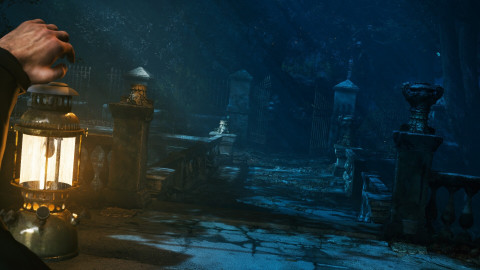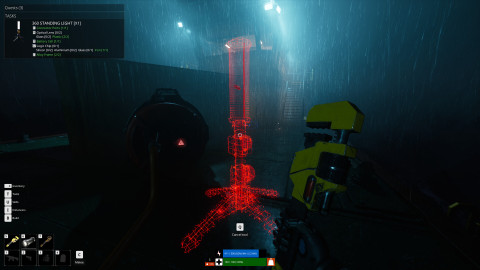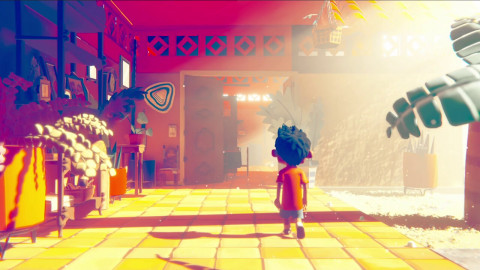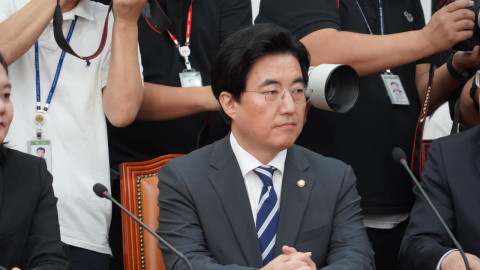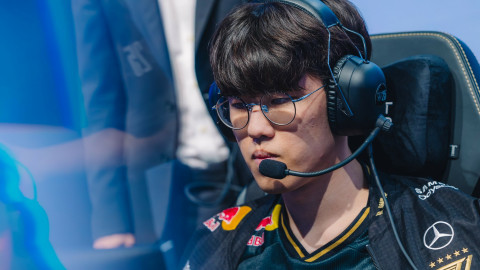
Among the speakers who stood on GDC 2017’s Animation Bootcamp today was Matt Boehm, who worked on Overwatch's first-person animation as the animator of Blizzard Entertainment. Boehm explained what challenges he had gone through in creating the first-person animation of Overwatch, what alternative routes he took to solve such struggle, and how he managed to emphasize the different physical and mental characteristics of each hero while at the same time not harming the player’s visibility in the messy and fast-changing battlefield. Session participants had a chance to view each of Overwatch hero's first-person animation in greater detail to discover what efforts and details have been hiding behind the scenes. Boehm also revealed some tricks behind the first-person animation that were imposed as measures to better emphasize each hero’s characteristics while wiping out unnecessary details to optimize player experience.
Let's keep things nice and clean
“It’s already a busy world out there. You don’t want to make it messier.” Boehm emphasized that it is important to make things neat and clean so that players would not have a hard time identifying everything that is going on in the battlefield. While it is important to include the details in generic animation such as shooting and reloading, it should not interrupt with the player’s line of sight because it harms the game's playability.

Boehm’s example above showed how Widowmaker’s rifle went through changes during the early developing stages of the game. The rifle’s relatively large size resulted in an interruption on the player’s right side of the screen, which the team had to make necessary changes so that the weapon would not block the player’s field of view. This was also the case in Soldier: 76’s reloading animation during developing stages of the game. While he reloaded his Pulse Rifle with his right hand in the prototype version of Overwatch, the Soldier: 76 we see nowadays reloads the rifle with his left hand due to the earlier animation blocking the player’s field of view.

Visual tricks in Overwatch we hardly noticed
Today's session also showed how the team rendered Overwatch’s first-person animation and third-person animation differently. Participants had a chance to see their first-person animation in a third-person point of view to discover the things they were not aware of. For example, the animation of Reinhardt’s second melee attack showed his right hand go through his left hand, as if it were a ghost, when viewed in third person. Winston’s left arm, which he uses to walk and jump around along with his two legs, actually never touches the ground when the first-person animation is viewed in third-person angle.

There were also numerous exaggerations at work to add more impact, and they gave the audience a good amount of laughter and applause as Boehm showed examples on the screen. People saw Genji’s Dragonblade stretch like rubber as he unsheathed and swung it. Zenyatta’s leg stretched out in an abnormal length upon initiation of melee attacks, and McCree stretched out his arm out upon firing his revolver and pulled it back upwards, giving the significant amount of recoil the players would expect from such a big revolver. Other examples that followed showed how Overwatch’s first-person renderings were designed to give players a bigger impact and driving force.


Breathing life into heroes through accumulation of details
Close examination at each character’s animation also revealed that each character walks differently, and that such adjustments were made to better convey the character’s personality and physical traits. Genji walks at a faster pace than other heroes, but his upper body remains calm and unshaken. This shows that he is a trained Ninja that maintains steady aim even when he is running fast. Junkrat, on the other hand, constantly limps as he walks due to his right leg being an artificial one.

The way Overwatch’s heroes reload their weapons differently also showed that each reloading animation was made in accordance with their personality. Pulse Rifle’s clip popping out upon reload, for example, was inspired by M1 Garand American infantry used during the late stages of WWII, solidifying Soldier: 76's identity as America's hero and Overwatch's former leader. D.Va spins her pistol throwing the empty magazine on the ground, showing her personality as an arrogant pro gamer. Roadhog smashes a handful of junk into his Scrap Gun when reloading, showing just how coarse he is with his style and weapon. Boehm also added that, although it is good to include all the details like above, it is important to not cover the player’s sight when reloading, especially around the reticle. He emphasized that doing so blocks player’s sight, thus harming the game’s playability.

The pillar that has been supporting Overwatch's global success
Overwatch heroes' solid identity and distinguishable characteristics have already been popular among the fans, but today’s session with Matt Boehm took a step further to allow people to see for themselves what kinds of tricks were hiding behind such details. GDC 2017's Animation Bootcamp showed how the Overwatch team has been walking the fine line in between spectacular and playability. There are multiple aspects to Overwatch’s global success as an FPS MOBA, and today’s session by Matt Boehm explained how such success came also from the small details that we players often missed out.


Sort by:
Comments :0


